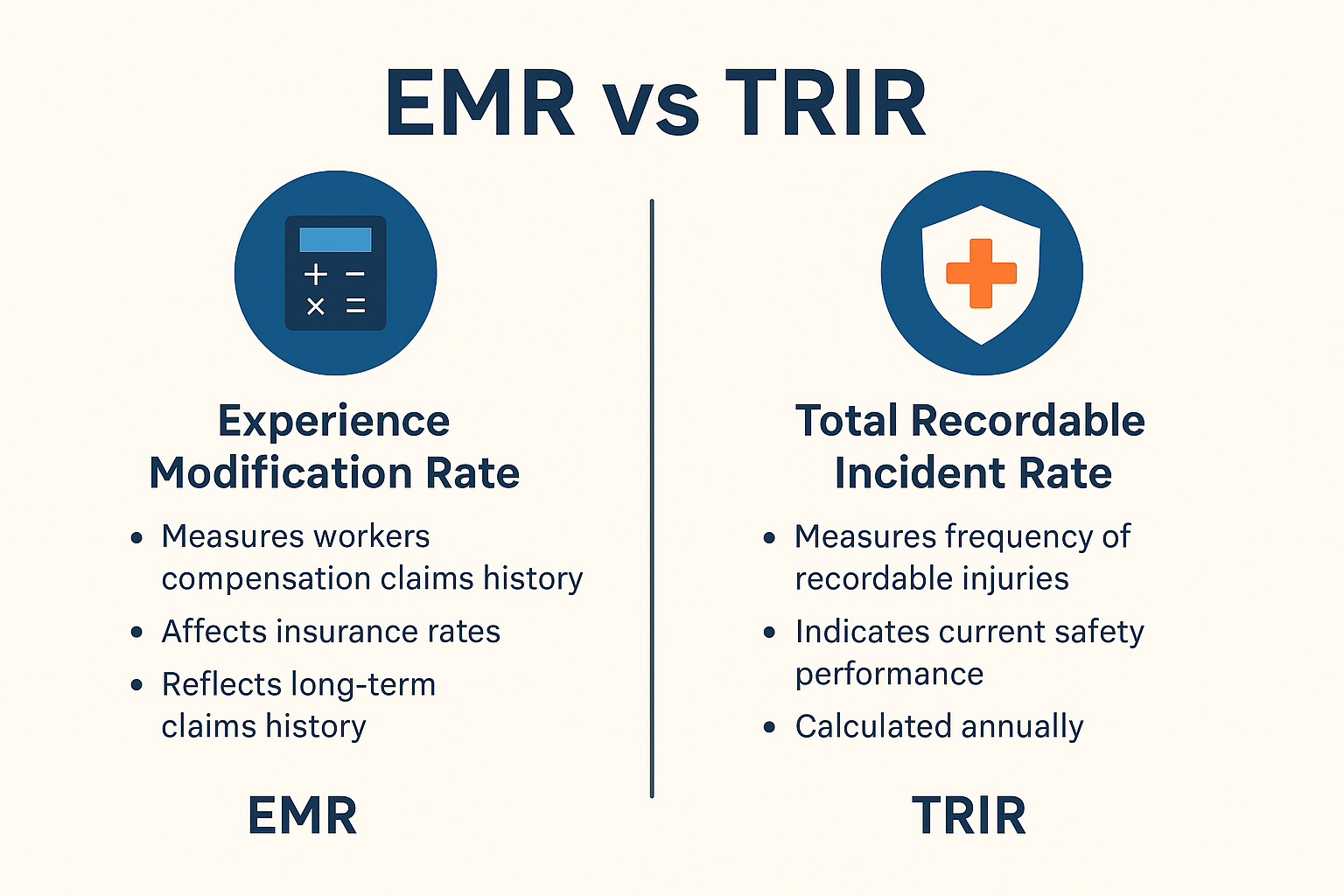Today’s businesses operate under increasing pressure to adopt sustainable practices and reduce their environmental impact. It’s no longer just regulators who are paying attention. It’s also investors, customers, and the communities in which companies operate.
All for good reason. Environmental damage brings serious consequences: legal action, financial loss, and a damaged reputation. But navigating ever-evolving laws, shifting public expectations, and complex technical standards can be overwhelming.
That’s why understanding environmental compliance is essential. And if you’re wondering what environmental compliance is and why it matters, you’re in the right place.
What Is Environmental Compliance?
Environmental compliance means your business is taking responsibility for how it affects the environment and improving its environmental performance by following the rules that go along with that.
In practice, it involves:
- Controlling emissions
- Managing waste responsibly
- Using energy and materials sustainably
- Meeting local, national, and international regulations
It’s about embedding sustainable operations and environmental responsibility into the way your business operates, from daily decisions to long-term strategy.
Key Environmental Laws and Regulatory Agencies
To understand compliance, you need to understand the laws behind it and the agencies that enforce them.
Major U.S. Environmental Laws
These foundational laws shape most federal environmental regulations:
- Clean Air Act (CAA): Sets standards to control air pollution from industrial and mobile sources.
- Clean Water Act (CWA): Regulates discharges into U.S. waters and establishes water quality standards.
- Resource Conservation and Recovery Act (RCRA): Governs hazardous waste from creation through disposal.
- Comprehensive Environmental Response, Compensation, and Liability Act (CERCLA): Supports the cleanup of hazardous waste locations.
- Toxic Substances Control Act (TSCA): Regulates the manufacture and use of industrial chemicals.
- Oil Pollution Act (OPA): Imposes oil spill prevention and response requirements.
- Endangered Species Act (ESA): Protects threatened and endangered species and their habitats.
Regulatory Agencies You Should Know
Meanwhile, here are the agencies in the US that enforce the laws related to environmental compliance.
- Environmental Protection Agency (EPA): Oversees most environmental compliance efforts at the federal level.
- State and Local Environmental Agencies: Enforce additional or more stringent regulations depending on your location.
- Occupational Safety and Health Administration (OSHA): While focused on worker safety, OSHA also covers the safe handling of hazardous materials.
What Environmental Compliance Actually Involves
Being compliant isn’t just a policy statement. It’s a commitment baked into your daily operations. Here’s where that plays out:
Air and Water Quality
Air and water quality control is a critical area. To minimize your environmental footprint, you need to install effective filtration systems and emission controls that reduce pollutants at the source.
Monitoring discharge levels, especially wastewater, also helps prevent contamination of local ecosystems. Regular reporting to the appropriate agencies helps you achieve transparency, ensures compliance, and keeps you in good standing with regulators.
Hazardous Waste Handling
Hazardous waste handling is another non-negotiable aspect. If your facility deals with hazardous materials, they must be clearly labeled, securely stored, and handled with extreme care.
Staff should receive proper training on safe procedures and emergency protocols, so they know exactly what to do if there’s an issue.
You can also partner with licensed waste disposal providers so materials can be transported and destroyed according to legal and environmental standards.
Environmental Permitting
Environmental permitting is essential for any operation that emits pollutants or draws on natural resources.
You’ll need to secure the correct permits before you begin, and maintain them as long as the activity continues. Staying compliant means keeping meticulous records, passing inspections, and adhering to every condition laid out in your permits, with no shortcuts.
Chemical Management
Chemical management requires consistent diligence. You should maintain an up-to-date inventory of all chemicals used on site and make sure every substance is labeled properly and stored safely.
More importantly, your team needs to be trained not just on handling these substances, but also on what to do in case of exposure or accidental release.
Emergency Response Planning
Emergency response planning ties it all together. Even with the best precautions, incidents can happen.
That’s why having a solid emergency response plan is vital. Your team should regularly practice spill response drills, know how to communicate in a crisis, and have access to the right equipment and resources to contain and resolve environmental hazards quickly and safely.
Why Does Environmental Compliance Matter?
More than just avoiding legal trouble, environmental compliance is running your business in a way that protects people, preserves the environment, and earns long-term trust.
When you commit to it, you’re not just following rules. You’re showing your team, customers, and community that you care about doing things the right way.
It Protects People and the Planet
Reducing emissions, preventing spills, and managing resources responsibly aren’t just good for the bottom line. They’re essential for public health and the environment.
Meeting environmental requirements helps limit health risks, protect natural habitats, and reduce environmental degradation. Whether it’s improving air quality or keeping waste out of local waterways, these actions have a real impact.
It Reduces Your Risk Exposure
Let’s face it: environmental harm can come with a hefty price tag.
Strong compliance practices help you stay ahead of potential legal issues and avoid the kind of environmental remediation that can drain both your finances and your reputation.
It Prevents Costly Disruptions
Non-compliance can grind operations to a halt. Missed inspections, expired site permits, or violations of environmental laws and regulations can lead to fines, shutdowns, or even lawsuits.
Staying compliant with evolving regulations and standards helps you avoid costly delays and keep your business moving.
It Cuts Waste and Improves Efficiency
When compliance is part of your daily routine, your operations run smoother. Efficient waste management, better air quality control measures, and smart resource use often lead to reduced costs and improved operational efficiency.
It’s one of the clearest ways compliance supports your business performance.
It Enhances Your Brand and Credibility
Customers, investors, and even job candidates are paying attention to how companies protect the environment. And when you take environmental compliance seriously, it shows.
Demonstrating environmental stewardship and following sustainable practices can enhance your brand image, build trust, and give you a real competitive advantage, especially as environmental concerns grow across industries.
How to Manage Environmental Compliance
Staying compliant isn’t always simple. Environmental regulations can be complex, and the rules change often. But with the right systems and habits in place, managing compliance can be a lot more manageable than it seems.
Build a Solid Environmental Management System (EMS)
Think of an EMS as your blueprint for doing things right. It connects your environmental goals to your everyday business processes, defining roles, tracking performance, and making sure everyone knows what’s expected.
Stay Up to Date on Regulations
Environmental laws aren’t static. Agencies like the EPA and other federal agencies regularly update environmental regulations, which means your compliance strategy has to keep up.
Set up alerts, follow industry news, or work with consultants who monitor changes. Staying informed helps you respond quickly and avoid surprises.
Audit Early, Audit Often
Regular internal audits and risk assessments are your best defense against non-compliance.
Whether you’re looking at emissions tracking, waste management, or your permitting process, routine checks help catch small issues before they become big problems or result in substantial fines.
Train Your Team
Your people are a huge part of your compliance strategy. Everyone from the shop floor to the front office needs to know how their work connects to environmental compliance.
Training on handling hazardous materials, understanding environmental laws and regulations, and responding to incidents should be ongoing, not just a one-time box to check.
Keep Good Records
Tracking your environmental performance is important for both staying organized and showing that you’re doing the right things.
Monitor and document everything from inspections to air quality readings to waste disposal logs. That kind of transparency not only satisfies regulatory bodies but also helps you make smarter decisions and improve over time.
Make Compliance a Team Sport
Environmental compliance shouldn’t sit on one person’s desk. It touches everything: operations, legal, HR, even marketing.
The more departments involved, the more embedded compliance becomes in your company culture. Cross-team collaboration helps you ensure compliance isn’t just an afterthought, but a part of how you work.
Use the Right Tools
Trying to manage compliance with spreadsheets and reminders? That’s a recipe for missed deadlines and gaps in your documentation.
Compliance tracking software, especially platforms built for environmental management, can centralize your efforts, keep everything audit-ready, and help you stay aligned with both federal and local environmental requirements.
EHS Momentum: Your Partner in Environmental Compliance
Compliance can feel complex, but you don’t have to figure it out alone. At EHS Momentum, we help businesses of all sizes simplify compliance and build systems that last.
Expertise That Goes Beyond the Checklist
Whether you’re launching a new compliance program or overhauling an outdated one, our team brings practical experience and regulatory insight. We don’t just hand you rules. We help you turn them into workable processes.
A Platform Designed for the Real World
Our software, MyMomentum, gives you:
- A mobile-friendly interface
- Real-time tracking and documentation
- Site-level visibility and control
- Seamless audit preparation
No clutter, no confusion. Just a streamlined way to stay compliant.
A Roadmap That Grows With You
With our Momentum Roadmap™, we guide you through every step, from gap analysis and documentation to employee training and system rollouts. We build what fits your needs, not someone else’s template.
Ready to move your compliance forward? Schedule a demo and see how EHS Momentum can support your team, your goals, and your environmental responsibilities.
FAQs About What Is Environmental Compliance
What does it mean to be environmentally compliant?
Environmental compliance involves more than just checking a few boxes. It reflects your company’s commitment to environmental responsibility and the broader goal of environmental protection.
That might include using certified environmental management systems, meeting environmental standards, or actively reducing your carbon footprint. When done right, it shows that your business takes its obligations seriously, and that can make a big difference to your company’s reputation.
What are examples of environmental compliance?
Environmental compliance shows up in all kinds of everyday business operations.
For example, safely storing and disposing of hazardous waste, treating water before releasing it back into the environment, or installing equipment that reduces air pollution are all ways companies can stay compliant.
It also includes getting the proper permits, conducting regular audits, following updated regulations and standards, and staying within legal requirements.
What does an environmental compliance officer do?
An environmental compliance officer plays a key role in helping your business meet regulatory requirements and avoid costly mistakes. They stay on top of environmental legislation, track new or changing regulations, and help your team understand what needs to be done to stay compliant.
Their responsibilities typically include maintaining permits, conducting internal audits, coordinating with regulatory bodies, and responding to environmental issues as they arise.
They also often lead employee training and help implement environmental management systems that embed compliance into daily business operations.
What is an environmental compliance certificate?
An environmental compliance certificate is an official document that confirms your business meets applicable environmental regulations. It’s usually issued by local or national regulatory bodies and may be required before starting construction, opening a facility, or expanding operations.
Getting certified shows that your business is operating responsibly and within the legal limits set by environmental legislation. It’s also a great way to demonstrate environmental responsibility to customers, investors, and community stakeholders.
In some cases, having a certificate in place can help your company gain a competitive edge or avoid delays tied to legal penalties or financial penalties.







